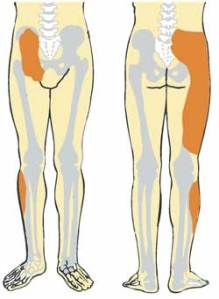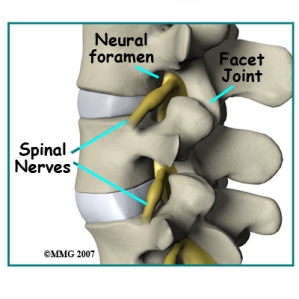The sacroiliac joint (SI) is the joint between the sacrum, the base of the spine, and the ilium of the pelvis.
Frequently it is a cause of pain in patients who have undergone lumbar fusions and traumatic injuries.
ST is 47 y/o active patient with 4 year history of left buttock pain which was constant in duration, progressive in nature with radiations into the left lateral thigh extending down calf and into the fourth and fifth digits of left foot. Buttock pain was aching and throbbing whereas the leg pain is ‘nerve’ like with intermittent sharp electrical sensations. Patient is active in volleyball and cycling. Physical examination was significant for positive Fortin test and patrick test.
ST was surprised of by the diagnosis of SI joint dysfunction. Surely this was irritation of the nerve root caused by a protruding lumbar disc.
Can SI joint be responsible for lower extremity pain?
Yes !
Slipman demonstrated that SI joint pain is not limited to the lumbar region and buttock. 50 patients were evaluated who had confirmed Si joint dysfunction. 94 % of patient described buttock pain whereas 50% of patients had lower extremity pain, 28% had leg pain distal to the knee and 14% reported foot pain.
Not all lower back, buttock and leg pain arises from disc disease.
At the Centeno-Schultz Clinic we are committed to making the correct diagnosis. Treatment options for sacroiliac joint dysfunction includes prolotherapy, PRP and bone marrrow derived stem cells.






 The stability of the joint is maintained by a series of ligaments which include the anterior and posterior sacroillac ligament. The joint functions as a shock absober for the pelvis and lumbar spine.
The stability of the joint is maintained by a series of ligaments which include the anterior and posterior sacroillac ligament. The joint functions as a shock absober for the pelvis and lumbar spine.




